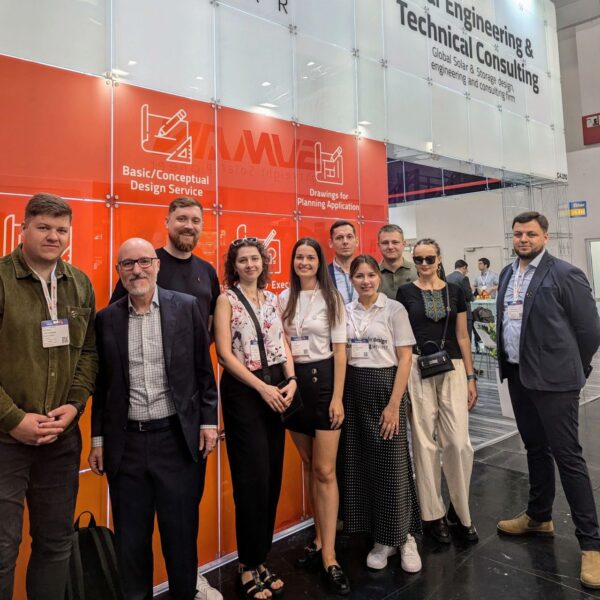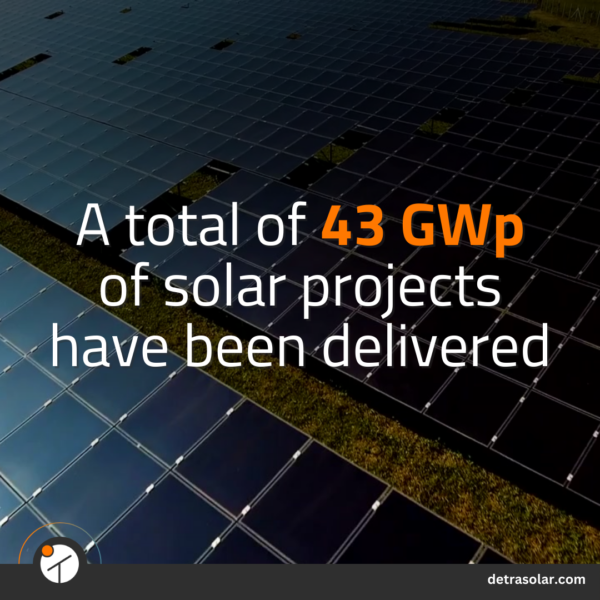Case Study: Elektrum 176 MW Solar Parks in Western Lithuania
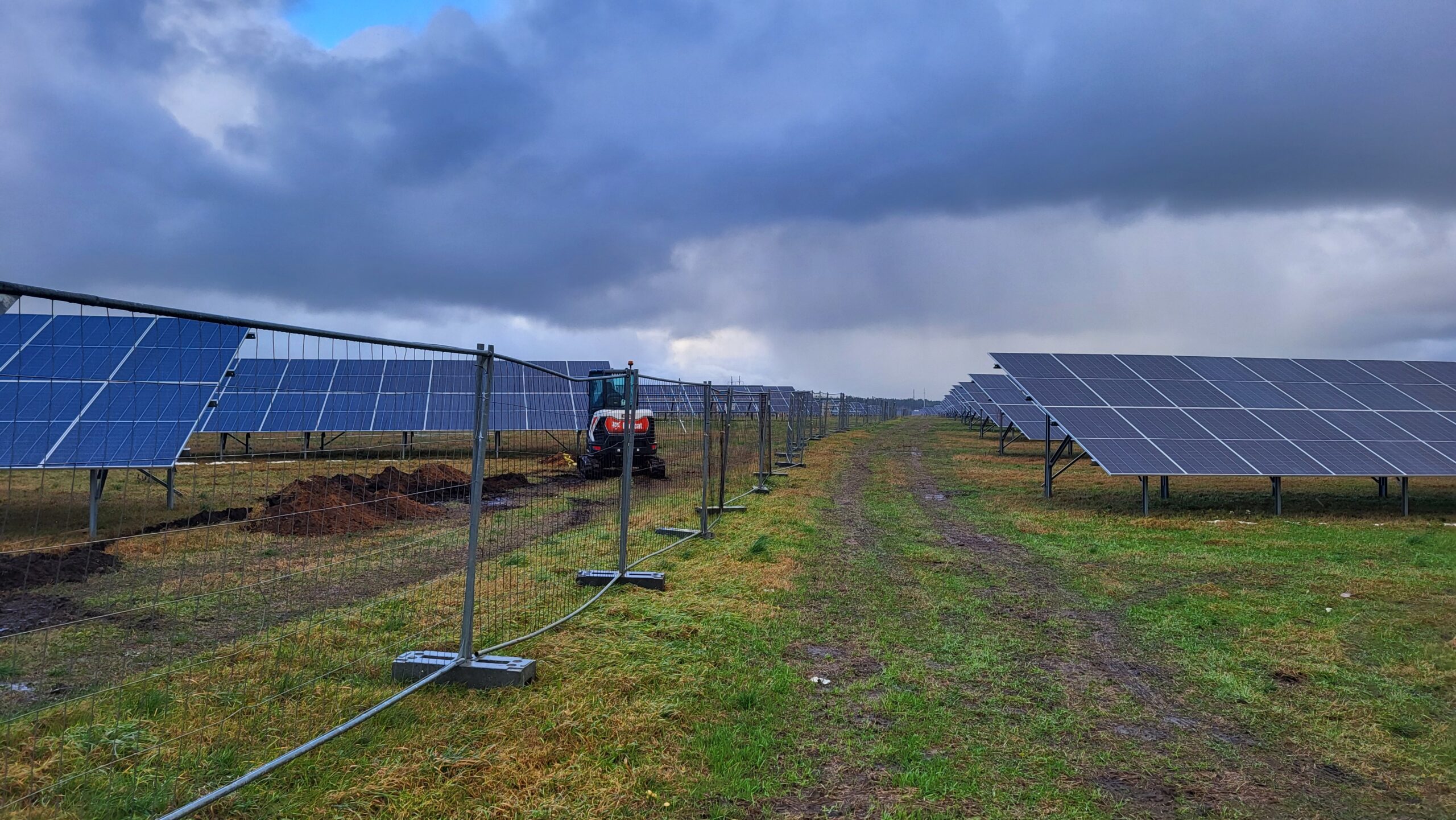
Elektrum Lietuva, an independent electricity producer and supplier, continues to expand its investment in solar energy. On October 2, the company inaugurated three new solar parks in the Klaipeda region, with a total installed capacity of 176 MW. Together, these parks will generate around 200,000 MWh of clean electricity annually, supplying power to more than 100,000 households across Lithuania.
All three projects employ fixed-tilt, two-portrait systems optimised for efficiency and long-term reliability under diverse soil and topographic conditions.
- 3 separate sites forming one portfolio: Kiskenai 91 MW, Dovilai 78 MW, Smelte 7.15 MW
- Total 176 MW DC capacity (fixed-tilt, 2P system)
- Started operating between May and October 2025, with the official inauguration held on October 2, 2025
Client
Elektrum Lietuva – A leading developer in solar, wind, and residential renewable energy projects, as well as electric vehicle charging solutions for individuals and businesses.
Project Location
Western Lithuania (Kiskenai, Dovilai, Smelte)
Key Deliverables
The project focused on delivering highly detailed and accurate supportive documents for construction, including:
- General Plan: Overall layout optimizations of the 2-portrait fixed-tilt PV system within the provided boundary.
- Fence & Road Layout: Design and placement of fencing and maintenance roads around the site.
- Various Elevation Drawings: Detailed side views of the fence, road, PV mounting system, inverter mounting and cable connection, string wiring, and other elements.
- Stringing Layout: PV String design and labeling system on a string level.
- String Cable Duct Layout: Distribution of string cable ducts on site.
- DC/AC Cabling Layouts: LV cables distribution on site (string/inverter level).
- Trench Design: Design of trenches for cabling on site.
- Single Line Diagram: Full electrical schematic of the project on a LV level.
- PVSyst Yield Analysis: Simulation and analysis of the PV system’s energy yield while accurately evaluating various shading and losses on site.
- Bill of Materials: Comprehensive list of equipment and quantities required for construction.
- Ampacity calculations: Main LV power cables selection for the project.
- Piling information: Preparation of module structure coordinates and pile length lists with leading PV software – PVcase.
- Earthing Layout: Grounding plan, how the module structures and inverters are grounded
Module construction
Main Challenges and Solutions
- Terrain and Structure Adaptability: We conducted a terrain analysis to adjust the module structure sizes in challenging terrain areas. Through multiple design iterations, we successfully adapted the entire site using Polish-manufactured mounting structures without the need for cut-and-fill, significantly reducing construction costs for the client.
Additionally, we collaborated with the structure manufacturers to find a solution for utilizing peat-covered areas by incorporating concrete piles, which allowed us to maintain the required DC capacity without removing any module tables in difficult terrain.
- Trenches Adaptability: To achieve required capacity due to limited space between the road and modules, we needed to place trenches between piles at some places (between first and second, second and third or even third and fourth). In result, we didn‘t lose DC Capacity and total yield. Also, it saved the length of trenches for the client.
- Portfolio Integration: The Dovilai KUS (78 MW) site combined seven individual PV projects into one unified layout. Each sub-project received its own DC design package and separate approval cycle before consolidation, ensuring documentation traceability and technical alignment.
These design optimizations ensured a smooth transition into the construction phase.
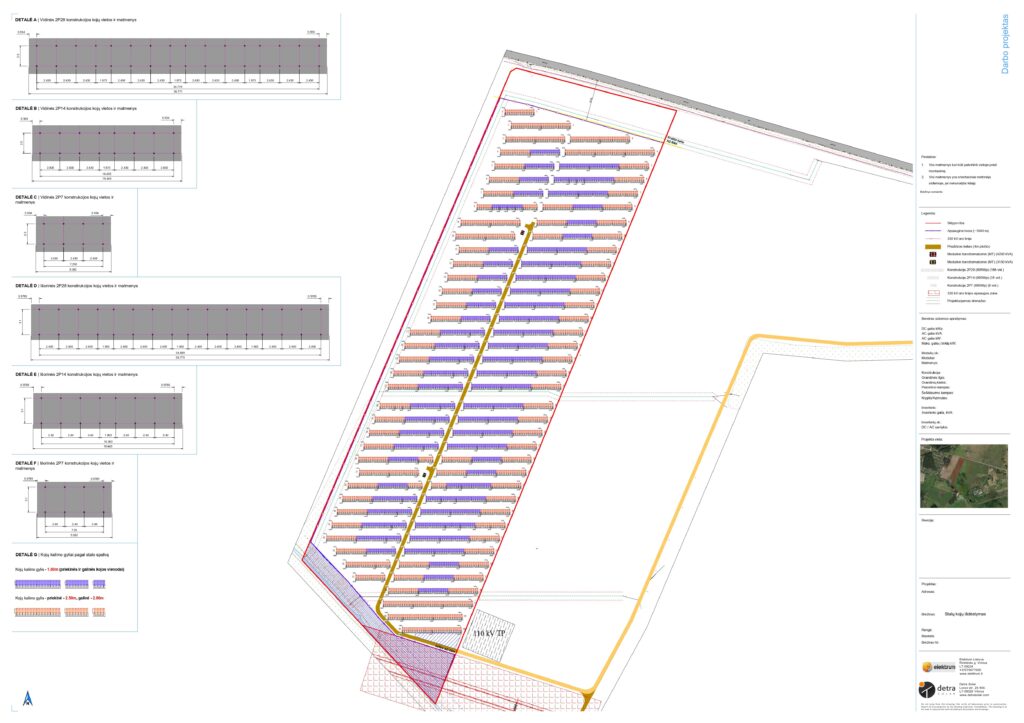
Ramming layout
Project Execution Approach
The Kiskenai (91 MW) project was developed by dividing the site into Northern and Southern territories, with dedicated design work for each area. Separate sheet distributions were prepared for the transformer zones, ensuring clear cable routing, logical infrastructure planning, and smooth coordination with partner disciplines.
The Dovilai KUS (78 MW) project was executed by integrating seven individual PV sites into one unified development. Each site was treated as a standalone project for which we prepared a complete DC design package, delivered documentation per site, and coordinated every step with the client and their AC-side design partners. This approach ensured clarity, traceability, and full technical alignment across all teams before merging the sites into a single coherent development.
Smelte Site (7.15 MW): Applied the same design logic on a smaller footprint to maintain consistency across the portfolio.

DC cabling layout
Results
Detra Solar’s engineering ensured:
- Full DC capacity retained despite terrain and spacing constraints
- Reduced earthworks and trench lengths through optimised routing
- Construction-ready documentation enabling seamless mobilisation
- Standardised, repeatable design logic across all three sites
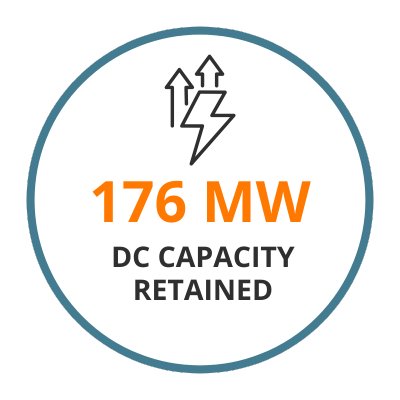

Conclusion
The Elektrum Lietuva 176 MW portfolio demonstrates how data-driven engineering can overcome challenging terrain and spatial limitations at utility scale. Through structural adaptation, trench optimisation, and disciplined DC design coordination, Detra Solar delivered a robust, construction-ready solution that supports Lithuania’s grid with 200,000 MWh of clean generation annually and accelerates the nation’s renewable energy transition.






